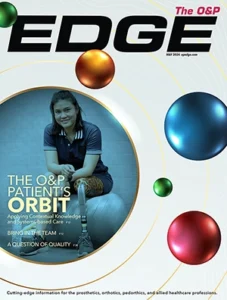Even with the aid of Wikipedia and Google, it’s impossible to gain and contain all knowledge about O&P and its diverse and specialized areas—clinical care, coverage disputes, administrative issues, and new business development.
Professional O&P consultants, however, bring to their work a rich history of experience and exposure to a broad array of challenges, offering valuable knowledge, analysis, and guidance to those who often don’t know what they’re missing. We asked consultants to share insights regarding their own specialty areas of O&P and the rewards their mentorship brings to both client and consultant.
Support authors and subscribe to content
This is premium stuff. Subscribe to read the entire article.





